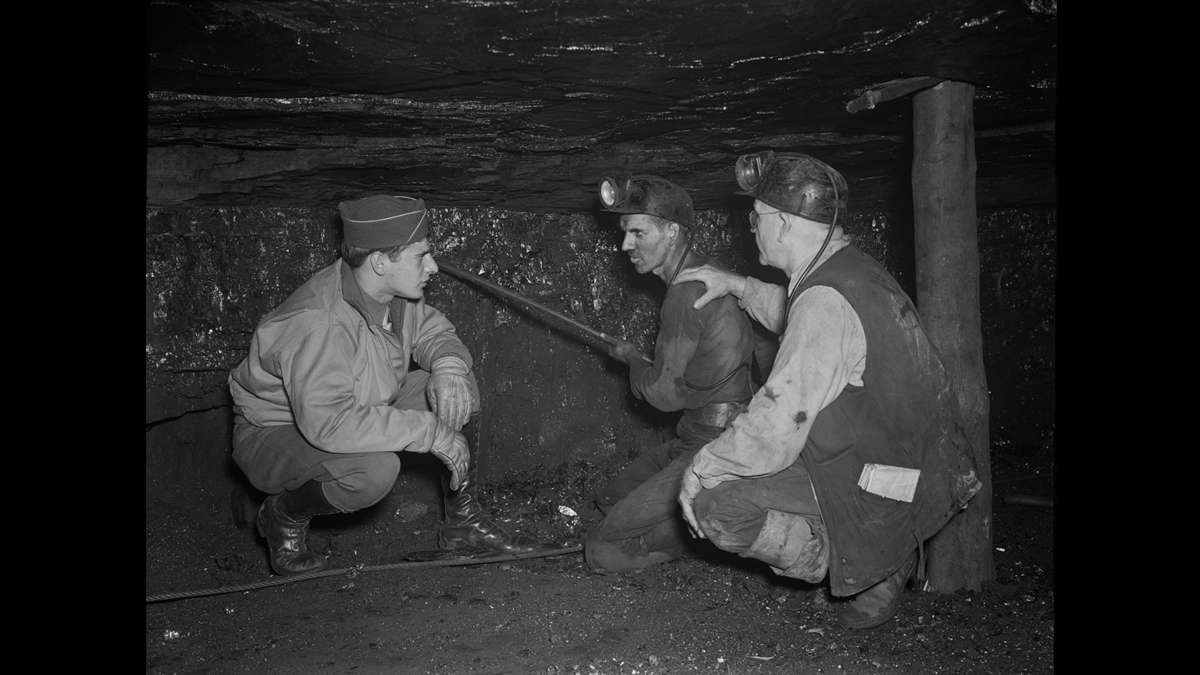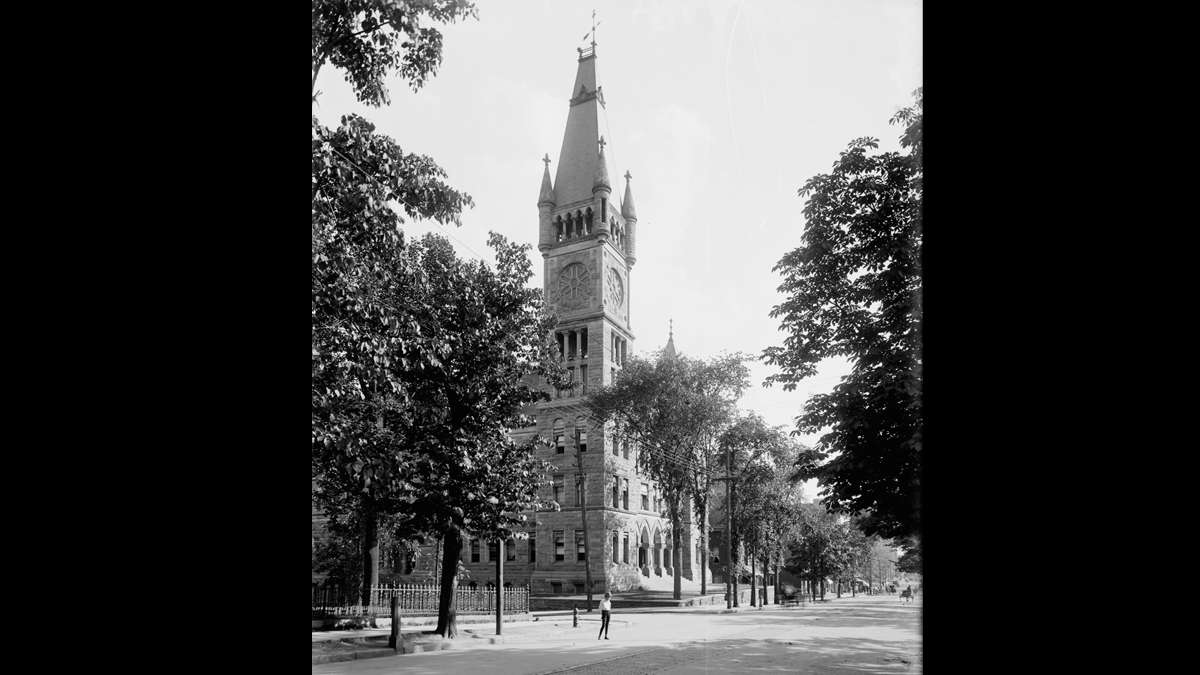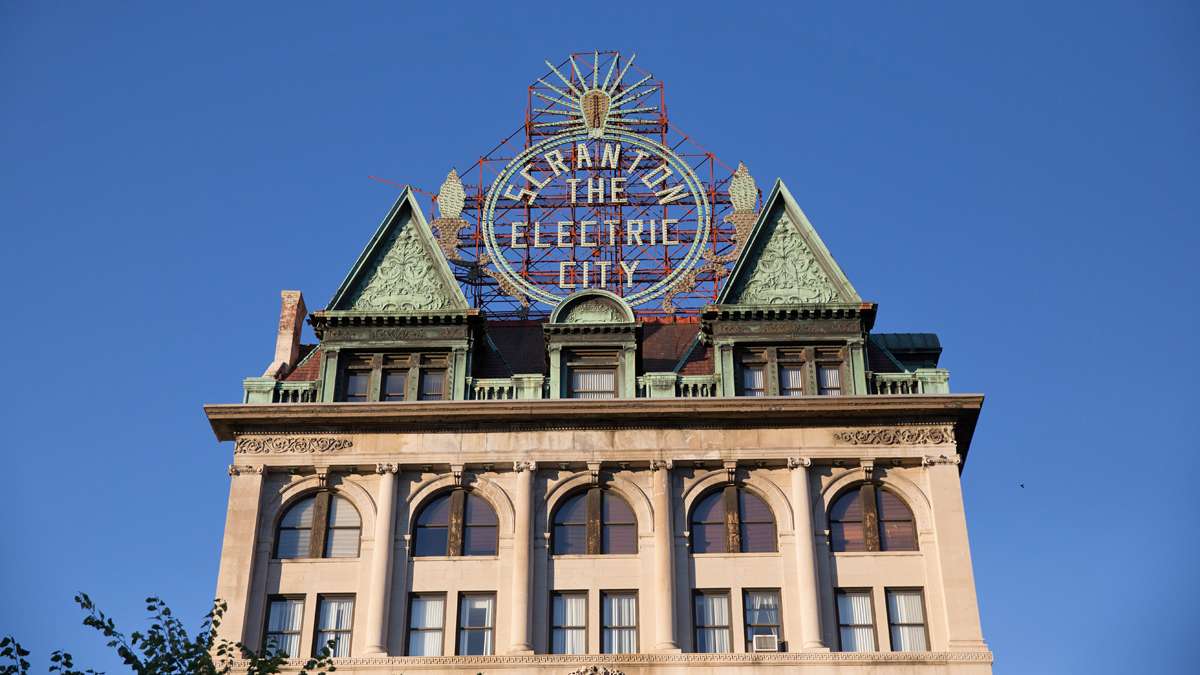Photos: Then and Now, Scranton places and faces
-

-

-

-

-

-

-

-

-

-

-

-

Visitors tour the grounds of McDade Park. Once coal mining terrain, the park is home of the Anthracite Heritage Museum, Lackawanna coal mining tour, and other recreation areas. (Lindsay Lazarski/WHYY)
-

-

-

-

-

Trivia: can you guess the city? (Lindsay Lazarski/WHYY)
-

-

-

-

-

Before Scranton was known as the home of Dunder Mifflin’s branch office, the city was known as the center of Pennsylvania’s anthracite coal country.
Then and Now is an ongoing photographic series from Keystone Crossroads, looking at historical images and photographs of today from Pennsylvania cities and towns.
Before Scranton became known as the home of Dunder Mifflin’s branch office, a fictional paper sales company in the television series “The Office,” the city was known as the center of northeastern Pennsylvania’s coal country.
Lewis Graver remembers the days when “coal was king” in Scranton and the surrounding cities. Graver, a fifth generation miner turned tour guide, takes visitors 300 feet beneath the surface into the cool, damp mine of Slope 190 at McDade Park.
During the tour, he points to what was once considered “black diamonds.” The shiny, vein of anthracite coal sits between layers of sedimentary rock, in a mine that operated from 1860 to 1966.
Visitors walk along the man-made gangways and stop to observe dioramas of mine laborers as Graver explains the hardships and hazards of the engineers, nippers, breaker boys, pump men and mule drivers.
After passing a three ton coal car, Graver leads the group to a dead end of solid rock. There he concludes the tour with a brief history of the fall of the anthracite coal industry and how cheaper and cleaner fuel alternatives became readily available and in high demand.
Above ground, signs from Scranton’s industrial past are alive in the city’s ornate architecture.
The restored Electric City sign lights up Courthouse Square in downtown Scranton. Historic churches and landmarks, like the Lackawanna Railroad Station surround the city’s bustling college campuses. And at Steamtown National Historic Site, visitors can stroll along the railroad tracks peering at gigantic locomotives and passenger cars with a sense of nostalgia.
Archival images from the Library of Congress.
WHYY is your source for fact-based, in-depth journalism and information. As a nonprofit organization, we rely on financial support from readers like you. Please give today.



